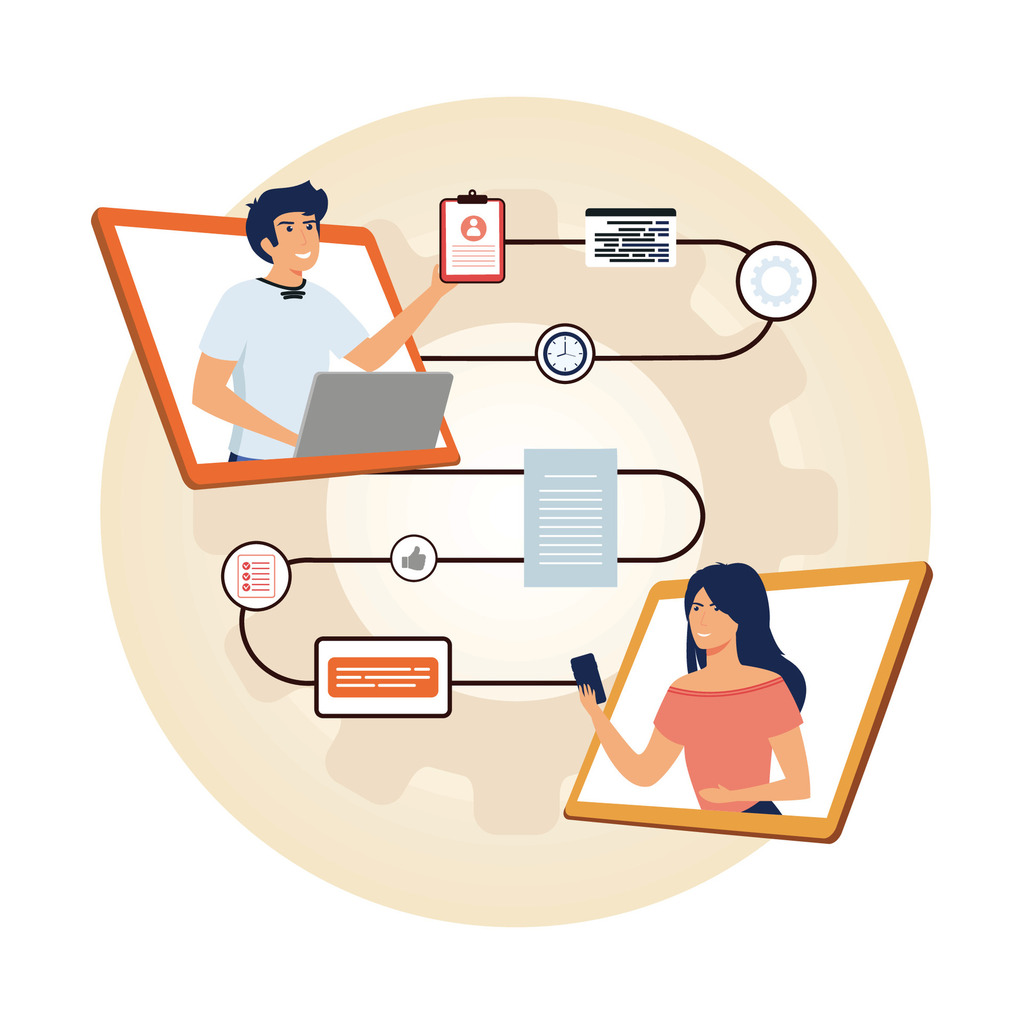The Ultimate Guide to Seamless Integration With CRM Records

Modern businesses thrive on accurate, accessible data. Customer relationship management (CRM) platforms serve as the backbone for this critical information, housing everything from prospect interactions to client purchase histories. Over 90% of U.S. companies with 10+ employees use these systems, proving their role as indispensable tools for growth.
Connecting applications to a central CRM breaks down data barriers. Teams gain real-time visibility into customer journeys, enabling smarter decisions and personalized engagement. This unified approach eliminates manual data entry errors while fostering collaboration between sales, marketing, and support departments.
Strategic alignment with CRM ecosystems unlocks hidden opportunities. Businesses discover new ways to optimize workflows, predict trends, and deliver exceptional experiences. For example, pairing a CRM with tools like ClearCRM helps teams streamline operations while maintaining data integrity across platforms.
This guide explores proven methods to harmonize business tools with CRM databases. Readers will learn technical best practices, avoid common pitfalls, and measure success through key performance indicators. The result? Enhanced productivity, stronger client relationships, and measurable ROI.
Key Takeaways
- CRM systems act as central hubs for critical business data
- Unified customer profiles improve decision-making across departments
- Automated workflows reduce errors and save time
- Cross-platform compatibility drives operational efficiency
- Proper alignment boosts customer satisfaction and retention
Understanding the Role of CRM Systems as a Single Source of Truth
The digital age demands precision in customer insights. Organizations rely on unified platforms to eliminate fragmented information and align teams. By consolidating data into one authoritative hub, businesses establish clarity across every department.
How Centralized Data Empowers Business Processes
Scattered spreadsheets and siloed tools create confusion. A centralized system provides real-time access to verified customer histories, purchase patterns, and communication logs. Teams spend 43% less time resolving data conflicts when using a single source, according to recent industry studies.
This approach streamlines decision-making. Sales teams identify upsell opportunities faster, while support agents resolve issues without switching between apps. Marketing campaigns gain precision through accurate audience segmentation.
| Traditional Setup | Centralized System | Impact |
|---|---|---|
| Multiple data sources | Unified platform | 87% fewer errors |
| Manual updates | Automated sync | 2.6x faster reporting |
| Departmental silos | Cross-team visibility | 31% higher collaboration |
The Impact on Customer Relationship Management
Complete interaction histories transform client experiences. Service teams address concerns using full context rather than partial details. This consistency builds trust and reduces frustration during support calls.
Personalization becomes scalable when departments share the same profiles. Marketing tailors messages using sales data, while account managers anticipate needs through service records. This alignment drives 22% higher retention rates in organizations using unified systems.
How Integration With CRM Records Transforms Your Business

Operational agility separates industry leaders from competitors. When platforms work in harmony, organizations unlock faster decision-making and measurable growth. This synergy becomes particularly evident in revenue-driving departments.
Accelerating Revenue Through Unified Insights
Sales professionals convert leads 34% faster when armed with complete interaction histories. Real-time updates from web forms and marketing tools eliminate guesswork. Teams deliver personalized messaging that matches prospect needs precisely.
Marketing groups achieve unprecedented precision by merging commerce metrics with service histories. Campaigns activate across channels using dynamic audience segments. One retail brand saw 28% higher email open rates after implementing this approach.
“Connected platforms turn raw numbers into actionable stories. Teams stop chasing fragments and start building relationships.”
Key outcomes emerge when departments share resources:
- Automated lead routing slashes response times by 41%
- Campaign ROI becomes trackable across the entire buyer journey
- Disputes over lead quality drop 67% with shared dashboards
These advancements create compounding returns. Businesses shorten sales cycles while boosting client lifetime value through consistent, data-backed engagement.
Benefits of Integrating CRM Systems
Forward-thinking organizations now prioritize connected systems to elevate performance. Centralized platforms deliver measurable advantages that cascade across departments, creating competitive advantages through operational harmony.
Boosting Team Productivity and Efficiency
Employees waste 19% of their workday searching for information across disconnected tools. Unified systems collapse this friction. Teams access complete customer profiles instantly, eliminating app-switching fatigue.
Automation handles repetitive tasks like updating contact details or logging interactions. This shift lets staff focus on strategic priorities. One study shows 50% productivity gains among service teams using synchronized platforms.
“Time saved through automation becomes fuel for innovation. Teams transition from data managers to relationship builders.”
Reducing Human Error and Data Silos
Manual processes invite mistakes. Connected platforms ensure updates flow automatically between systems. Finance and sales teams reference identical figures, reducing billing disputes by 63% in some cases.
Legacy data silos crumble when departments share real-time insights. Marketing campaigns activate using current purchase histories, while support teams resolve issues with full context. 74% of companies report improved customer satisfaction after eliminating fragmented information sources.
These improvements create compounding returns. Businesses shorten decision cycles while maintaining accurate records across every touchpoint. The result? Stronger client trust and sustainable growth.
Exploring CRM API Integrations

APIs form the digital backbone of modern customer management strategies. These interfaces enable secure communication between platforms, allowing businesses to share critical details without manual intervention. By leveraging standardized protocols, organizations maintain consistent information flows across tools.
Understanding CRM API Endpoints
CRM providers offer specialized access points for different data types. Contacts, sales opportunities, and user permissions each have dedicated endpoints. Structured formats like JSON ensure systems interpret details correctly during transfers.
| Feature | API Endpoints | Manual Methods | Benefit |
|---|---|---|---|
| Data Access | Real-time retrieval | Delayed exports | 87% fewer delays |
| Update Frequency | Instant sync | Batch uploads | 2.4x faster updates |
| Error Rate | Automated validation | Human entry | 91% accuracy boost |
How API Sync Enhances Data Accuracy
Automated synchronization eliminates version conflicts between platforms. When a sales rep updates a contact’s phone number, connected tools reflect the change instantly. This real-time alignment prevents service teams from using outdated details.
Built-in validation rules reject improperly formatted entries during transfers. APIs also retry failed sync attempts, reducing data gaps. One logistics company reduced billing errors by 68% after implementing these safeguards.
“APIs act as quality checkpoints. They ensure every piece of information meets strict standards before entering your ecosystem.”
Rate limit awareness prevents system overloads. Developers design integrations to respect provider thresholds, ensuring uninterrupted data flows during peak usage periods.
Internal vs. Customer-Facing CRM Integrations
Strategic alignment determines how businesses connect tools to their core systems. Two approaches dominate: optimizing internal operations or enhancing client capabilities. Each path delivers distinct advantages while requiring tailored implementation strategies.
Internal Use Cases and Process Automation
Linking enterprise software creates operational harmony. Marketing platforms push qualified leads directly into sales pipelines, while support teams access updated client histories instantly. Territory-based lead routing ensures representatives receive prospects matching their expertise.
Automated workflows handle repetitive tasks with precision. Service tickets sync with account profiles, triggering alerts for high-priority clients. One logistics firm reduced response times by 52% after implementing these rules.
“Smart automation transforms chaotic workflows into predictable engines. It’s about working smarter, not harder.”
Creating Value for Clients with CRM Integrations
Partner-facing connections simplify client operations. When your platform shares information with their existing tools, manual exports become obsolete. Sales teams gain immediate access to critical context during customer interactions.
This bidirectional flow eliminates duplicate entries across systems. A SaaS company reported 37% faster onboarding after enabling automatic profile creation in clients’ preferred platforms. Users focus on outcomes rather than administrative tasks.
Client-centric designs prioritize compatibility with popular ecosystems. Businesses strengthen partnerships by reducing friction in daily workflows. The result? Longer contract cycles and expanded revenue opportunities.
Streamlining Operations with Unified APIs and iPaaS

Businesses face mounting pressure to connect diverse software ecosystems efficiently. Two approaches dominate this landscape: integration platforms as a service (iPaaS) and unified APIs. Choosing the right solution impacts scalability, maintenance costs, and operational agility.
Platform Comparison: Capabilities and Use Cases
iPaaS solutions excel at bridging cloud-based and on-premises systems. These platforms offer pre-built connectors for popular applications, reducing development time by 40-60%. Teams automate workflows across marketing, sales, and inventory tools while maintaining centralized control.
| Feature | iPaaS | Unified APIs |
|---|---|---|
| Setup Time | 2-4 weeks | 1-2 weeks |
| Coverage | Specific connectors | Multiple systems |
| Customization | High | Standardized |
Unified APIs take a different approach. Developers build one integration that works across multiple platforms within a software category. This method proves ideal for businesses needing broad compatibility without maintaining numerous individual connections.
“The right tool depends on your ecosystem complexity. iPaaS suits intricate hybrid environments, while unified APIs deliver rapid multi-platform access.”
Key decision factors include:
- Technical team size and expertise
- Number of connected applications
- Need for real-time data synchronization
Modern solutions address critical pain points through automated error recovery and granular permissions. Teams gain actionable insights through dashboards tracking sync success rates and latency metrics.
Enhancing Customer Experience Through Integration
Exceptional client interactions drive business success. When teams access unified profiles across platforms, they deliver faster resolutions and tailored solutions. This alignment transforms generic exchanges into meaningful engagements.
Personalized Service and Efficient Support
Service representatives resolve issues 65% faster when viewing complete interaction histories. Synchronized systems display purchase patterns, past tickets, and communication preferences instantly. Clients no longer repeat details across departments.
| Traditional Support | Connected Systems | Improvement |
|---|---|---|
| Manual data searches | Auto-populated profiles | 73% time saved |
| Generic responses | Context-aware solutions | 41% satisfaction boost |
| Multi-app navigation | Single interface access | 68% fewer errors |
Chatbots handle 34% more inquiries effectively when linked to service libraries. They reference troubleshooting guides and account specifics in real time. One telecom company reduced call volume by 22% after implementing this approach.
“Unified profiles turn service teams into customer champions. They anticipate needs instead of reacting to complaints.”
Consistency across channels strengthens loyalty. Marketing tailors offers using support insights, while sales adjusts pitches based on service trends. This cycle reduces client turnover by 19% annually.
Overcoming Technical Challenges in CRM Integrations

Technical hurdles often stall progress when connecting business platforms. Teams face complex authentication protocols, shifting API requirements, and conflicting data formats. Addressing these obstacles requires strategic resource allocation and scalable solutions.
Managing Engineering Resources Effectively
Developers spend 30% more time troubleshooting API connections than building core features. Prioritizing product innovation becomes difficult when teams handle endless sync errors. One study found companies lose 220 hours monthly maintaining custom-built links between systems.
“Engineering talent should drive competitive advantages, not fix broken data pipelines.”
| Challenge | Impact | Solution |
|---|---|---|
| API rate limits | Delayed data updates | Automated retry systems |
| Schema changes | System downtime | Change detection alerts |
| Data mapping errors | Inaccurate reporting | Pre-built templates |
Scaling Integrations to Meet Business Demands
Expanding connected systems multiplies maintenance workloads. Pre-configured connectors reduce setup time by 57% compared to custom code. Unified APIs let teams support multiple platforms through one interface.
Automated monitoring tools track sync health across ecosystems. Alerts notify engineers about authentication failures before clients notice disruptions. These processes cut resolution times by 41% in high-growth companies.
Maximizing ROI with Data-Driven CRM Strategies
Firstly, data-driven approaches separate thriving businesses from stagnant competitors. Moreover, when teams unify critical metrics across platforms, they unlock actionable insights that fuel growth. As a result, real-time alignment between tools transforms raw numbers into strategic assets.
Leveraging Connected Systems for Smarter Choices
Automated synchronization eliminates manual data entry gaps. Decision-makers access current customer profiles, sales trends, and service histories instantly. This precision reduces guesswork in resource allocation and campaign planning.
Key benefits emerge when businesses centralize information:
- Accurate forecasting using unified sales pipelines
- Personalized engagement based on cross-departmental insights
- 68% faster identification of high-value opportunities
Companies using synchronized platforms report 31% higher profit margins within 18 months. Teams align priorities through shared dashboards, focusing efforts on high-impact activities. For example, reviewing top CRM solutions helps organizations choose systems that maximize compatibility.
Continuous improvement becomes achievable through centralized analytics. Leaders track campaign performance against revenue goals, adjusting tactics in days rather than weeks. This agility drives sustainable success in dynamic markets.

